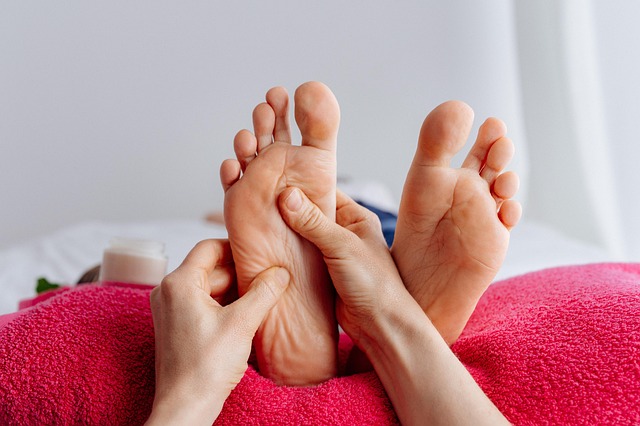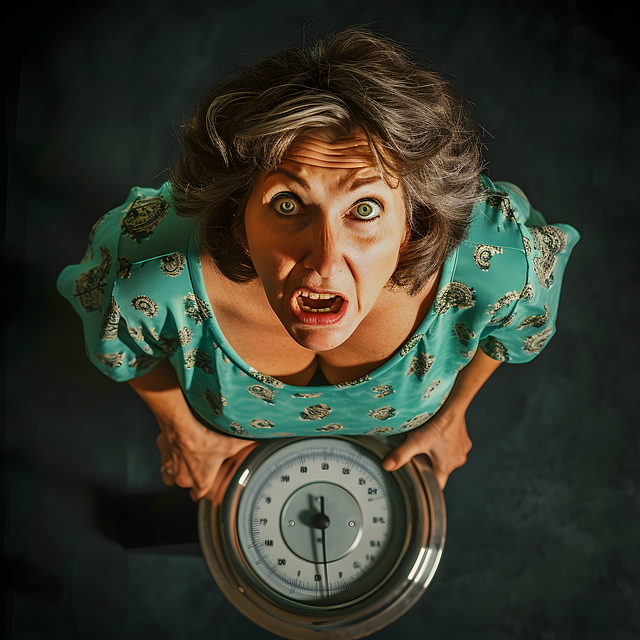Anxiety disorders are common globally, causing excessive fear and worry. Recognizing symptoms is key for accessing effective treatments, primarily behavioral therapy. This includes Cognitive Behavioral Therapy (CBT), which targets negative thought patterns, and Exposure Therapy, helping individuals gradually confront fears. Relaxation techniques, such as deep breathing, reduce anxiety symptoms. Behavioral Activation encourages engaging in enjoyable activities to overcome fears. Common barriers include change resistance and fear of failure, but therapists can help by creating safe spaces and celebrating progress. Behavioral therapy has proven success stories, offering lasting well-being through structured modifications and coping strategies.
Anxiety disorders affect millions, yet understanding their complexities is crucial for effective anxiety treatment. This comprehensive guide explores various types and symptoms of anxiety, highlighting the transformative power of behavioral therapy. From Cognitive Behavioral Therapy (CBT) and Exposure Therapy to relaxation techniques and behavioral activation, we demystify these evidence-based approaches. Learn how to overcome common barriers to behavior change and be inspired by real-life success stories showcasing the positive impact of behavioral therapy in managing anxiety.
Understanding Anxiety Disorders: Types and Symptoms

Anxiety disorders are a common mental health concern, affecting millions worldwide. They encompass a range of conditions characterized by excessive and persistent fear, worry, or anxiety that interferes with daily functioning. The key types include generalized anxiety disorder (GAD), panic disorder, social anxiety disorder, and specific phobias. Individuals with GAD experience excessive and uncontrollable worry about various aspects of life, such as work or health. Panic disorder is marked by recurrent and unexpected panic attacks, intense periods of fear accompanied by physical symptoms like rapid heartbeat and sweating. Social anxiety disorder involves an intense fear of social situations, often leading to avoidance behaviors. Specific phobias are extreme fears of particular objects or situations, like heights or spiders.
Recognizing the symptoms is a crucial step in seeking effective anxiety treatment. These may include restlessness, fatigue, muscle tension, difficulty concentrating, irritability, and insomnia. People with anxiety disorders might also experience persistent concerns about potential threats or dangers, even when there is no real peril. Some individuals may have a specific trigger, while others grapple with generalized anxiety. Understanding these manifestations is essential for determining the most suitable course of action, which often involves behavioral therapy as a primary treatment method.
The Role of Behavioral Therapy in Anxiety Treatment

Behavioral therapy plays a pivotal role in the arsenal of anxiety treatment strategies. It focuses on modifying unhelpful behaviors and thought patterns that contribute to anxiety disorders. By understanding the connection between thoughts, feelings, and actions, individuals can learn to challenge negative thought processes and replace them with healthier alternatives. This form of therapy encourages facing feared situations gradually, which helps to reduce anxiety over time.
Through structured techniques like exposure therapy, cognitive restructuring, and relaxation exercises, behavioral therapy empowers patients to manage their symptoms effectively. These evidence-based methods have proven successful in treating various types of anxiety, offering long-lasting benefits for those seeking anxiety treatment.
Cognitive Behavioral Therapy (CBT): A Step-by-Step Guide

Cognitive Behavioral Therapy (CBT) is a structured and evidence-based approach to anxiety treatment. The process begins with identifying negative thought patterns and beliefs that contribute to anxious feelings. Once these have been pinpointed, therapy focuses on challenging and replacing them with more realistic and positive thoughts. For instance, if someone suffers from social anxiety, CBT might help them recognize and change distorted thoughts like “Everyone will judge me” to more balanced ones like “People might not like what I say, but it’s okay.”
The next step involves learning relaxation techniques, such as deep breathing or mindfulness exercises, to manage physical symptoms of anxiety. Patients are also equipped with coping strategies for dealing with anxious moments, like progressive muscle relaxation or visualization techniques. Through gradual exposure to feared situations, CBT enables individuals to confront their anxieties in a safe and controlled manner, ultimately desensitizing them to triggers and reducing the intensity of anxious responses over time.
Exposure Therapy: Facing Fear Head-On

Exposure therapy is a powerful tool within behavioral therapy for anxiety treatment. It involves gradually and carefully exposing individuals to situations or objects they fear, helping them confront and overcome their anxieties head-on. By facing their fears in a controlled environment, patients learn to manage their responses and realize that their feared outcomes are not as devastating as imagined. This process allows individuals to develop coping strategies and a deeper understanding of their anxiety triggers, empowering them to lead more fulfilling lives free from debilitating fear.
Through exposure therapy, people with anxiety disorders can learn to challenge their negative thoughts and beliefs associated with specific situations or objects. As they repeatedly encounter and successfully navigate fearful scenarios, their anxiety responses diminish over time. This approach is highly effective for conditions such as obsessive-compulsive disorder (OCD), panic disorder, and phobias, offering a practical path to long-term relief from anxiety symptoms.
Relaxation Techniques for Anxiety Management

Relaxation techniques are a cornerstone of behavioral therapy for anxiety treatment, offering individuals powerful tools to manage and reduce anxious symptoms. These practices aim to counteract the physical and mental tension often associated with anxiety disorders by promoting a sense of calm and relaxation. Techniques such as deep breathing exercises, progressive muscle relaxation, and meditation have been proven effective in reducing stress and improving overall well-being.
By incorporating these relaxation methods into daily routines, individuals can learn to recognize and disrupt anxious thought patterns. Deep breathing, for instance, helps slow heart rate and activates the body’s natural relaxation response, counteracting the physiological effects of stress. Progressive muscle relaxation involves systematically tensing and then releasing different muscle groups, reducing physical tension and promoting a state of tranquility. These practices empower individuals to take control of their anxiety, fostering a sense of self-efficacy in managing symptoms effectively.
Behavioral Activation: Making Everyday Activities Work for You

Behavioral Activation is a core component of behavioral therapy, focusing on engaging in activities that bring pleasure and purpose, helping to manage anxiety symptoms. This approach challenges individuals to step out of their comfort zones and embrace tasks they might have been avoiding due to fear or anxiety. By gradually facing these activities, patients can learn to confront their worries in a safe environment, reducing the power their anxiety holds over them.
This technique encourages folks to structure their days with meaningful actions, fostering a sense of accomplishment and boosting mood. Simple activities like walking, cooking, or connecting with friends can become powerful tools in the fight against anxiety disorders. Through Behavioral Activation, individuals regain control, understanding that they have the capability to lead fulfilling lives despite their anxious thoughts.
Common Barriers to Behavior Change and How to Overcome Them

Many individuals seeking anxiety treatment face several common barriers that can impede their progress. One significant obstacle is resistance to change, often stemming from deep-rooted habits and thought patterns associated with anxiety. People may struggle to let go of familiar behaviors or beliefs, even if they recognize them as unhelpful. Overcoming this requires building motivation and fostering a sense of self-efficacy; helping individuals understand the benefits of behavioral changes and encouraging them to envision a future free from anxiety can be powerful motivators.
Another barrier is the fear of failure or uncertainty about the process. Some individuals might feel anxious about trying new strategies or stepping out of their comfort zones. To address this, therapists should create a safe and supportive environment, breaking down complex tasks into manageable steps, and celebrating small victories along the way. Providing clear goals and offering techniques for managing setbacks can help reduce anxiety related to the change process, fostering a sense of control and encouraging continued effort.
Real-Life Success Stories: Transforming Lives Through Behavioral Therapy

Anxiety can be a debilitating condition, but behavioral therapy offers a powerful tool for managing and overcoming it. Real-life success stories abound, highlighting the transformative potential of this approach. Many individuals have found freedom from anxiety’s grasp through structured behavior modifications, learning coping strategies that enable them to face their fears head-on.
These inspiring accounts demonstrate that behavioral therapy is an effective anxiety treatment, providing practical solutions for lasting change. By rewire negative thought patterns and replacing them with healthier behaviors, people are able to regain control of their lives, improve their overall well-being, and lead more fulfilling existence free from the constraints of anxiety.
